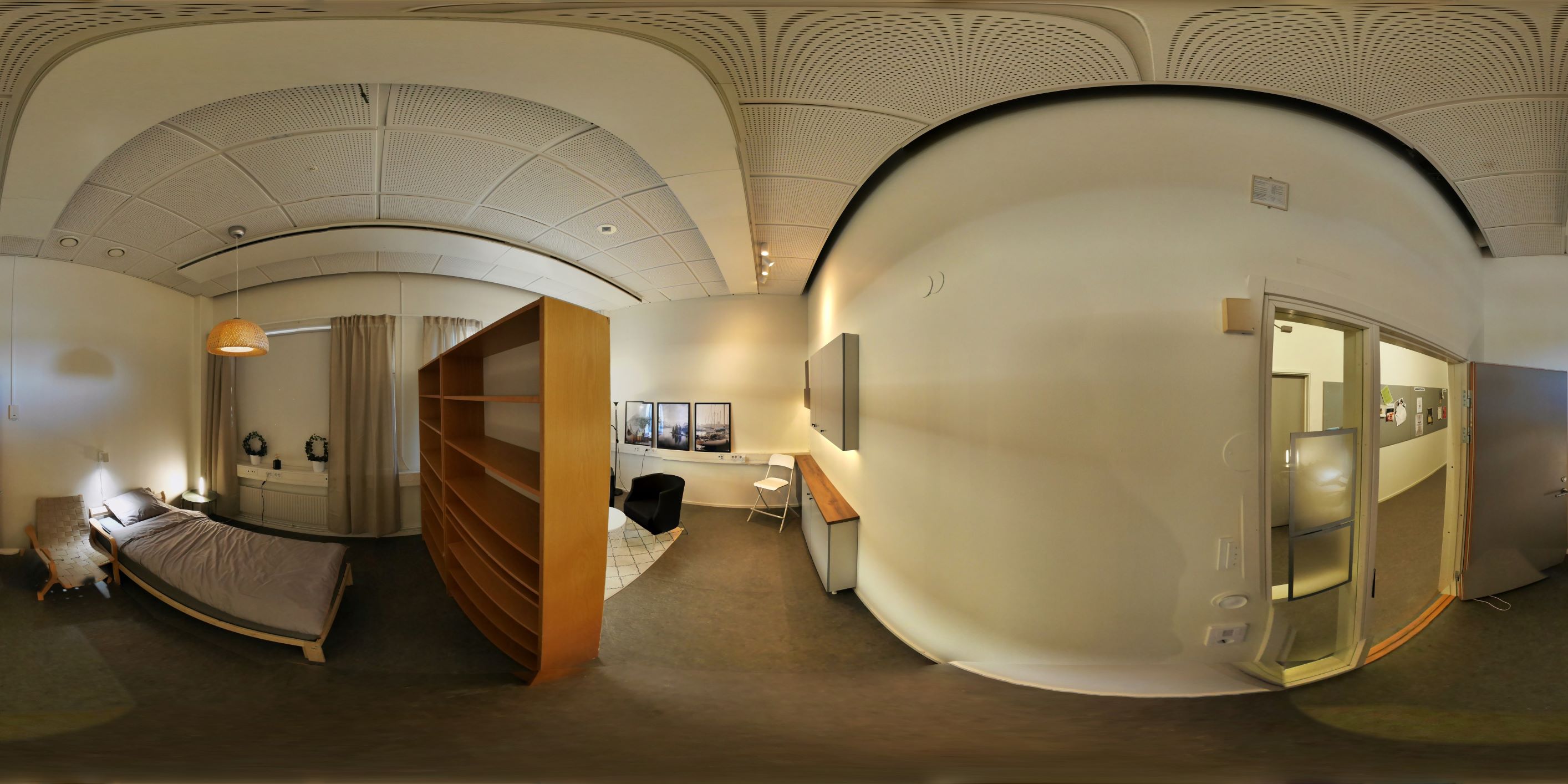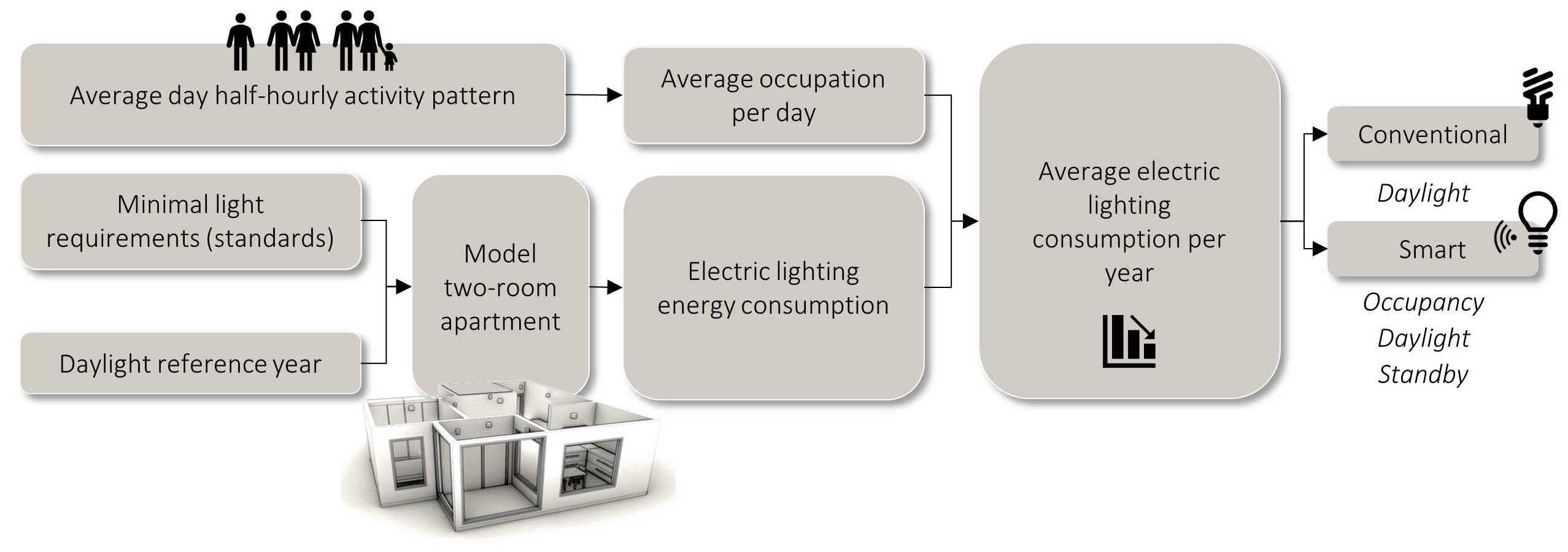Smart lighting in the built environment
Health and well-being claims, user-system interaction, and energy efficiency are three challenges for smart lighting use in the built environment. Smart lighting control can assist energy-efficient behaviour and well-being improvement, but a mismatch between user expectation and system interaction can make it a source of frustration, especially in a home environment. Smart systems should save energy rather than increase it due to standby energy and data transfer.
The aim is to develop and test smart lighting protocols for the built environment that provide or increase safety, comfort, health, and well-being and minimise energy consumption

Related projects
- SMart Illumination in Living Environment (SMILE)
- Daylight and Occupancy Sensing Environments (DOSE)
- EXtensive Tracking of Respiration Added in Daylight and Occupancy Sensing Environments (EXtra-DOSE)
First outcomes
An agent-based simulation model of a one-bedroom apartment in Sweden was chosen for comparison between different households' arrangements and occupancy patterns regarding the energy consumption of a conventional and Smart Lighting System (SLS). The first result shows that the number of residents within an apartment does not necessarily lead to higher energy consumption. Further findings indicate that, even though it has standby energy consumption, SLS is more energy-efficient compared to the conventional lighting system. Additionally, energy consumption during weekends was considerably higher than during weekdays (Soheilian et al., 2019).
In a light simulation study in Sweden (Hafezparast-Moadab et al., 2021), the electric lighting energy consumption for a two-room apartment was modelled for three different household scenarios using DIALux Evo and DIVA-for Rhino. The household scenarios were composed based on input by 12 existing Swedish households and incorporate residential occupancy variety. The study's findings suggested that the appropriate use of smart lighting solutions, including optimised sensor applications, has the potential to save more than 50% of electric lighting energy consumption compared to non-smart systems. The study demonstrated promising simulation results specifically focussing on (smart) lighting application alternatives in the residential sector.

Contact information and publications
For more information regarding the research area and/or projects, please contact Myriam Aries (SMILE) or RatnaKala Sithravel (DOSE / Extra-DOSE).
Related publications
- Femke Beute, Myriam Aries, (2023), The importance of residential dusk and dawn light exposure for sleep quality, health, and well-being External link, opens in new window., Sleep Medicine Reviews, 101865, Published online: 14 October 2023
- RatnaKala Sithravel, Jérôme Landré, Annita H Wennlöf, Myriam Aries, Potentials of radar sensor detecting the presence of an imitated user for optimising short-range presence-sensing lighting in homes, Journal of Physics: Conference Series (JPCS), CISBAT 2023, The built environment in transition, Lausanne, Switzerland, 13-15 September 2023
- Myriam Aries, Alyaá Tabbah, Géza Fischl, Field study challenges: Customisation and personalisation during lighting control research in residences, Journal of Physics: Conference Series (JPCS) , CISBAT 2023, The built environment in transition, Lausanne, Switzerland, 13-15 September 2023
- RatnaKala Sithravel, Thomas Olsson, Myriam Aries, (2023), Optimizing presence sensing lighting for energy efficiency and user behavioral needs in small Swedish homes, LEUKOS, Published online: 30 May 2023
- Alyaá Tabbah, Géza Fischl, Myriam Aries, Evaluating digital twin light quantity data exchange between a virtual and physical environment External link, opens in new window., BuildSim Nordic 2022, 22nd-23rd August, Copenhagen, Denmark
- Hafezparast Moadab, N., Olsson, T., Fischl, G., Aries, M., (2021), Smart versus conventional lighting in apartments - Electric lighting energy consumption simulation for three different households External link, opens in new window., Energy and Buildings, Volume 244, 1 August 2021, 111009.
- Soheilian, M., Hafezparast Moadab, N., Fischl, G., Aries, M. (2021). Smart Lighting Application for Energy Saving and User Well-Being in the Residential Environment, Sustainability, 13(11), 6198.
- Soheilian, M., Hafezparast Moadab, N., Fischl, G., Aries, M. (2019). Comparison of simulated energy consumption by smart and conventional lighting systems in a residential setting. Bristol: Institute of Physics (IOP), CISBAT 2019, Climate Resilient Cities – Energy Efficiency & Renewables in the Digital Era, 4–6 September 2019, EPFL Lausanne, Switzerland
